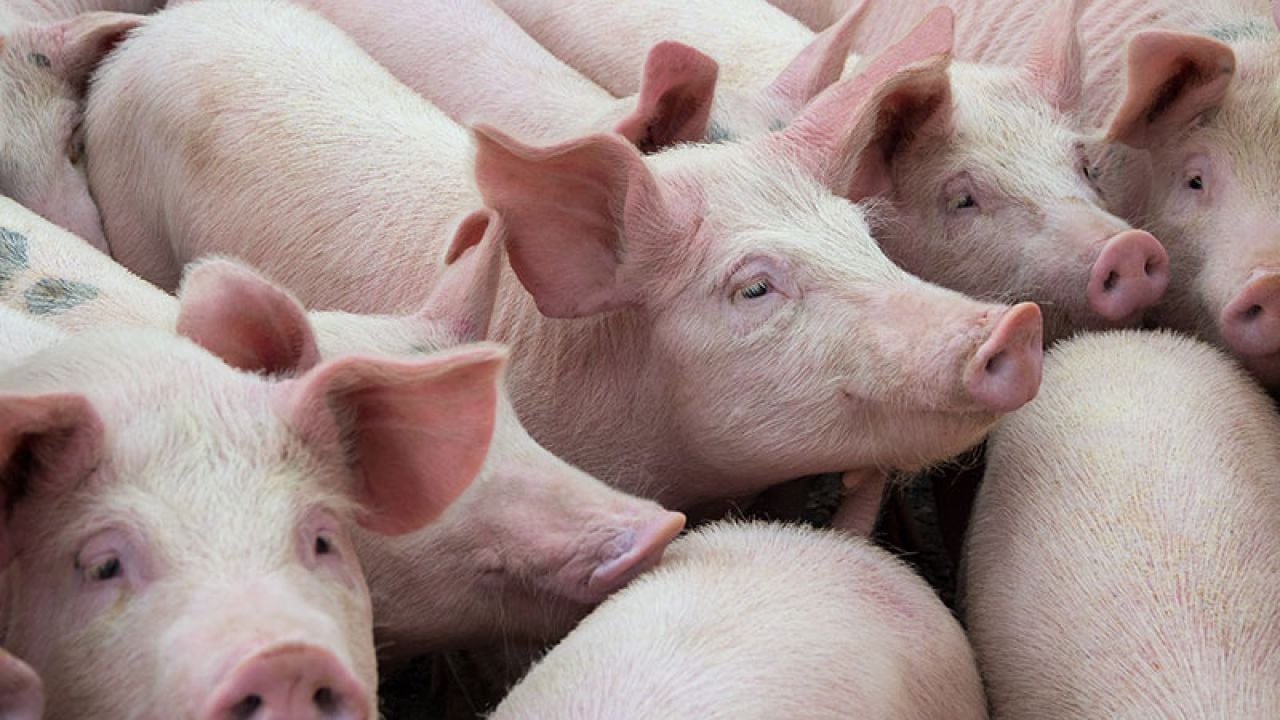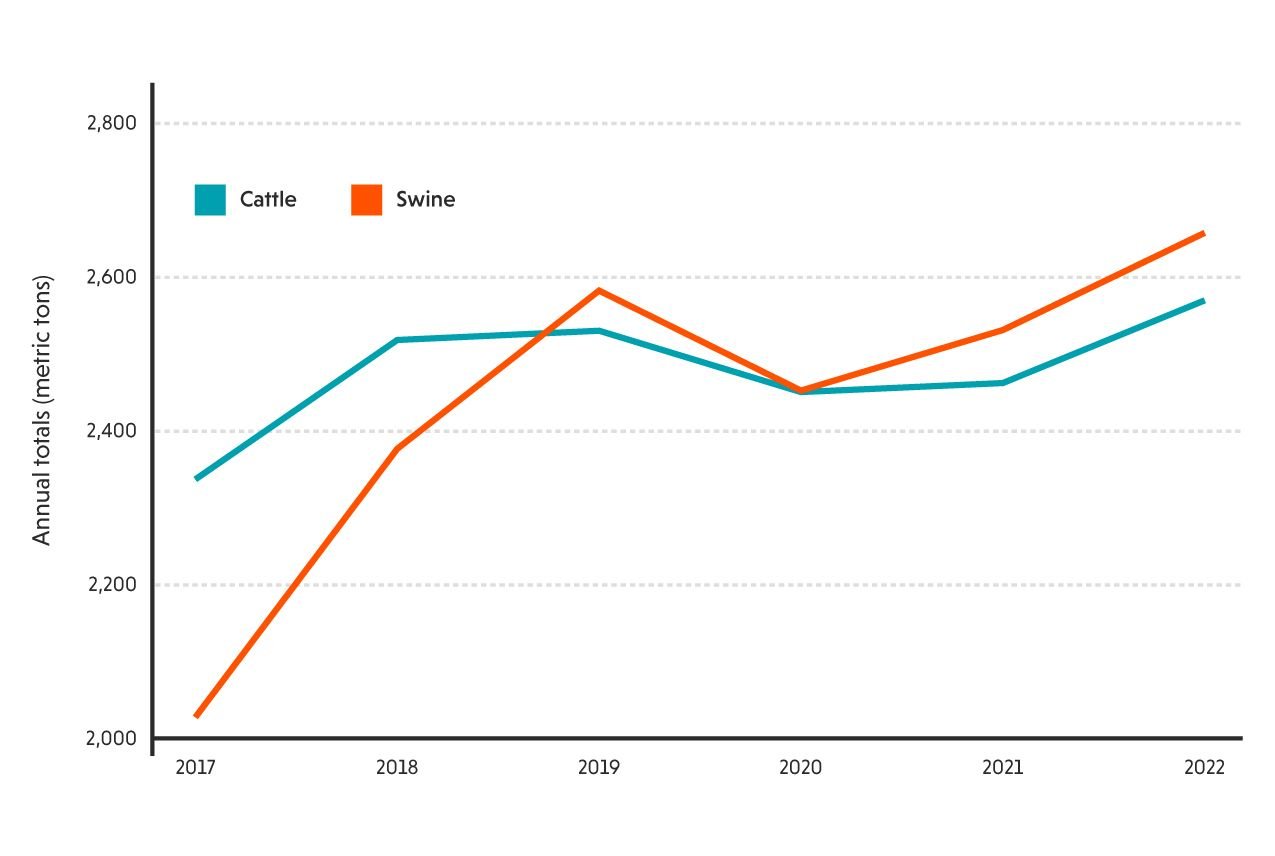
The sale of medically important antibiotics in farm animals grew by 12 percent between 2017 and 2022, further jeopardizing the effectiveness of these life-saving drugs.
The overuse of antibiotics in farm animals makes bacteria more resistant and antibiotics less effective, leading to almost 3 million illnesses and 35,000 deaths a year in the U.S.
But sales of these crucial drugs for use in factory-farmed animals soared from 5.6 million kilograms, or kg, in 2017 to 6.2 million kg in 2022, an Environmental Working Group analysis found. And sales of medically important antibiotics for use on farms grew by 4 percent in 2022 alone, according to the Food and Drug Administration.
The fastest growing rate of this antibiotic sold for use across animal types was for swine, rising from 2 million kg in 2017 to 2.7 million kg in 2022, up 31 percent.
The amount of these antibiotics – vital for protecting human health – sold for use for cattle also increased, from 2.3 million kg to 2.6 million kg, or by 10 percent.
By contrast, the amount of medically important antibiotics sold for use in chicken has continued to fall.
Medically important antimicrobial drugs approved for use in food-producing animals actively marketed in 2017-2022

The vast majority of medically important antibiotics are given to animals and not humans. In the U.S., about 70 percent of all medically important antibiotics sold are for animals.
Since 2017, the FDA has prohibited the use of antibiotics to help promote animal growth. The agency has required farmers to get a prescription from veterinarians before adding antibiotics to animal feed.
But antibiotics are still widely used to prevent illnesses in animals, even when the animals are healthy. And the FDA is still failing to track how antibiotics are used on the farm.
The use of antibiotics in farm animals has surged in recent decades as more animals are raised in crowded conditions on factory farms. Sales fell after the FDA prohibited their use to promote animal growth, but have begun to increase again. In particular, experts recently reported that these antibiotics are increasingly going to animals, not people.
Changing how pigs are raised can significantly reduce the need for antibiotics. Denmark, Europe’s second largest pork producer, changed how barns were set up to give animals more room and better ventilation, and antibiotic use fell by more than 50 percent.
U.S. farmers can implement similar changes, by raising fewer animals in each barn, and providing them with better ventilation. This could greatly reduce the amount of antibiotics given to livestock.
When packaging on conventional meat products claims that animals have been raised without antibiotics, those claims may not actually be true. The only way consumers can know if meat is raised without antibiotics is if farmers start significantly reducing the use of antibiotics in meat production, if the Department of Agriculture cracks down on food packaging claims, or if consumers buy organic meat raised without antibiotics.
The USDA has pledged to update how antibiotic-free meat product claims are regulated. Until then, consumers worried about preserving the effectiveness of antibiotics should choose organic, which prohibits the use of antibiotics in animal production, or consider a plant-based alternative.



